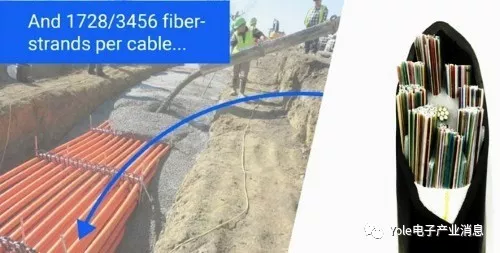NEC、Google使用人工智能和概率成型进行商业海底网络传输测试

(來源:Google)
NEC announced successful completion of transmission tests across a commercial submarine network using artificial intelligence (AI) and probabilistic shaping at a modulation of 64 QAM. In a joint research publication with Google, NEC says it demonstrated for the first time a spectral efficiency of 6 bps/Hz over an 11,000-km submarine cable segment. The publication's authors assert the demonstration set a spectral efficiency-distance product record of 66,102 bps/Hz in a field trial performed with live traffic neighboring channels. With a potential capacity of over 26 Tbps in the C-band, this is more than 2.5 times the capacity intended for the undersea cable initially, with no additional wet plant capital expenditure, asserts NEC.
The team used near-Shannon probabilistic-shaping at a modulation of 64QAM to accomplish this result. For the first time on a live cable, AI was used to analyze data for nonlinearity compensation (NLC), the firm attests. To accurately estimate the signal nonlinearity, NEC developed an NLC algorithm based on data-driven deep neural networks (DNN). The results of this field trial were recently discussed at the post-deadline session of the Optical Fiber Communication Conference and Exhibition 2018 in San Diego, CA.
The experimental demonstration of NLC reached a generalized mutual-information (GMI) capacity gain of ~0.15 bps/2-pol, a capacity increase equal to 15 Gbps in every 100 GHz of fiber bandwidth. NEC said it plans to continue AI-based research to both increase system capacity and decrease implementation complexity.
"Other approaches to NLC have attempted to solve the nonlinear Schrodinger equation, which requires the use of very complex algorithms," said Toru Kawauchi, NEC's general manager, submarine network division. "This approach sets aside those deterministic models of nonlinear propagation, in favor of a low-complexity black-box model of the fiber, generated by machine learning algorithms. The results demonstrate both an improvement in transmission performance and a reduction in implementation complexity. Furthermore, since the black-box model is built up from live transmission data, it does not require advance knowledge of the cable parameters. This allows the model to be used on any cable without prior modeling or characterization, which shows the potential application of AI technology to open subsea cable systems, on which terminal equipment from multiple vendors may be readily installed."
The use of probabilistic shaping should become more common in the future, based on other news out of OFC 2018. Nokia revealed it is using probabilistic constellation shaping in its new Photonic Service Engine 3 ASIC (see "Nokia touts ultimate in spectral efficiency via PSE-3 chipset and probabilistic constellation shaping").
Source: https://www.lightwaveonline.com/